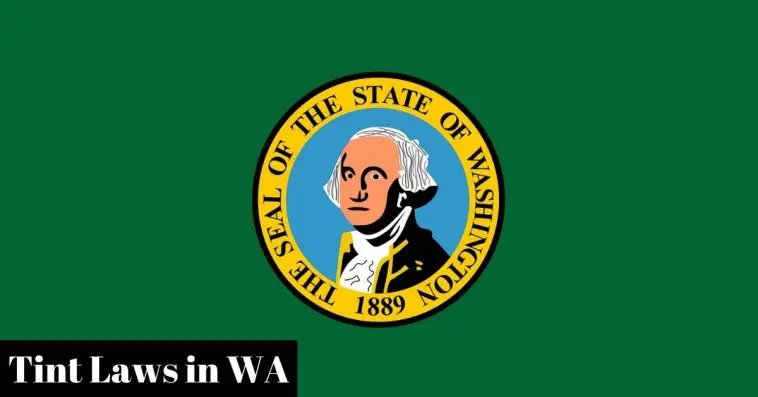Having car windows tinted can make your vehicle more comfortable. However, each state follows a set of rules and regulations for window tinting. These regulations can help reduce the number of car accidents on the road.
Window tint is sometimes considered an obstruction to the driver’s view. This is why I have decided to talk about the different window tint rules in Washington.
TABLE OF CONTENTS
Are You Allowed To Have Tinted Windows And Windshield In Washington?
Washington introduced laws regarding car window tinting in 2011. And there are different regulations for window tinting, depending on the type of car you drive.
The windshield of your car should not have tint. However, you can apply window tint that is not reflective on the top six inches of the windshield. Another requirement in Washington is having a sticker that shows you are following the window tint laws.
What Is The Darkest Tint You Can Legally Get In WA?
The darkest tint you can get in Washington depends on the type of car you have. If you have a sedan, your window tint should allow at least 24% of the light inside. This rule applies to all of your windows.
If you have a multi-purpose vehicle like an SUV or Van, you can have any tint darkness on your back and rear side windows. However, your front side windows should follow the 24% tint darkness restriction as well.
Is 20 Tint Illegal In WA?
If you have a sedan or passenger car, yes, it is illegal to have a 20 window tint. However, if you have a multi-purpose vehicle, you can apply any tint darkness on your back and rear windows. Both vehicles should follow the 24% window tint restriction on their front or passenger side windows.
Can You Get Pulled Over For Tinted Windows In Washington?
If your windows do not have the permitted level of tint, the police have the right to pull you over. The police can test the darkness of your window tint and give you a fine if you are not following the regulations.
How Much Is A Tint Ticket In WA?
If you get pulled over and the police see that you are not following window tint regulations, they can test the darkness of your window tint first. Once they confirm that your window tint is darker than the requirements, you can get a ticket amounting to $124.
Window Tint Darkness In Washington
Sedans or passenger vehicles must only have a window tint that allows 24% of the light inside the car.
Aside from this, the state requires you to have a decal or sticker that shows you are following the laws. This sticker should be between the film as the panel on the driver’s window.
For Passenger Vehicles
- Windshield: You cannot put any window tint on your front windshield except for the top six inches of your windshield. The window tint you put in should not be reflective as well.
- Front Side Windows: Your front side window should have a window tint darkness that allows more than 24% of the light inside your car. The window tint color should not be red, gold, yellow, or black.
- Back Side Windows: Your front side window should have a window tint darkness that allows more than 24% of the light inside your car. You are required to have dual-side mirrors if you choose to tint your back-side windows.
- Rear Window: Your front side window should have a window tint darkness that allows more than 24% of the light inside your car. You cannot use mirror-finished products or spray-on materials in Washington.
For MPVs (Multipurpose Vehicles)
- Windshield: You cannot put any window tint on your front windshield except for the top six inches of your car. You cannot use a reflective window tint on your windshield or any reflective finish products.
- Front Side Windows: Your front side window should have a window tint darkness that allows more than 24% of the light inside your car. You cannot use red, gold, yellow, or black colored tints.
- Back Side Windows: Multi-purpose vehicles can apply any tint darkness on their backside windows.
- Rear Window: You can apply any tint darkness on your rear window if you have a multi-purpose car.
Window Tint Reflection In Washington
Washington also follows a rule regarding tint reflectiveness. Your car should not use any mirror finish or spray-on products. If you would like to add a reflective window tint on your car, you can only have a window tint that is not more than 35% reflective.
Your windshield is not allowed to have any reflective window tint, even if it is applied on the top six inches of the windshield. Always ask your manufacturer if they use a film that follows the tinting requirements.
For Passenger Vehicle
- Front Side Windows: You cannot use a tint that reflects more than 35% of the light coming from the outside
- Back Side Windows: You cannot use a tint that reflects more than 35% of the light coming from the outside
For MPVs (Multipurpose Vehicles)
- Front Side Windows: You cannot use a tint that reflects more than 35% of the light coming from the outside
- Back Side Windows: You cannot use a tint that reflects more than 35% of the light coming from the outside
How Do You Get A Medical Exemption For Window Tint In Washington?
You can get a medical exemption from the if you have a medical condition that requires a darker window tint. Your physician should write a letter stating your medical condition and you must bring it to your vehicle at all times.
Conclusion
So, there you have it – the laws and regulations for tinting your car windows in Washington that you must follow if you have a registered car in the state. Depending on the type of car you have, you can only have a window tint that allows more than 24% of the light inside.
If you have a medical condition that requires a darker window tint, you can get a medical exemption from your physician.




